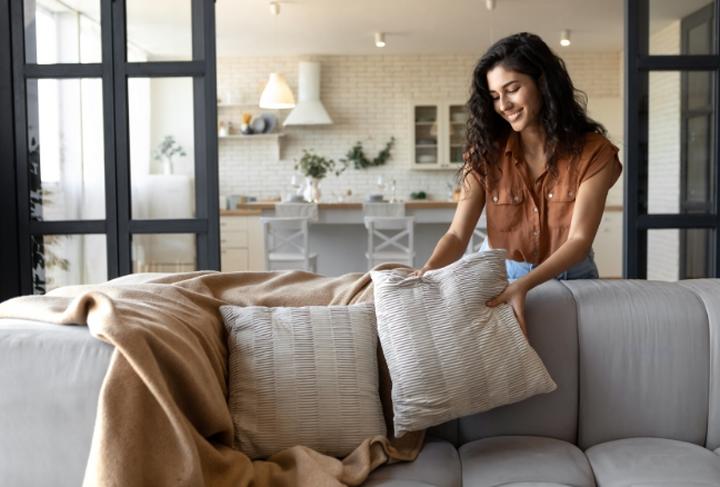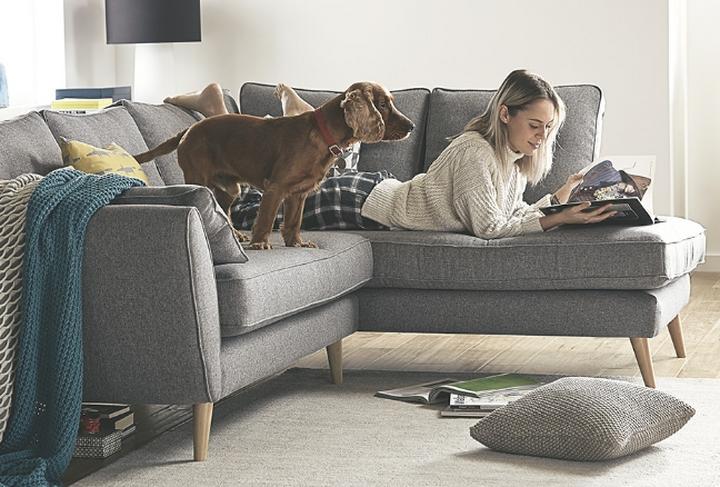
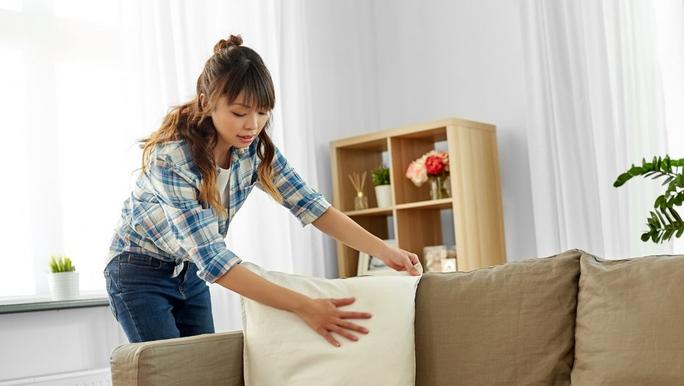
When you’ve spent hours researching and testing to find the perfect piece of furniture for your home, you’ll want to maintain that brand new feeling for as long as possible. To help keep your furniture looking its best for longer, we’ve created an in-depth DFS sofa care guide.
Read on for advice on textile, leather and upholstery care.
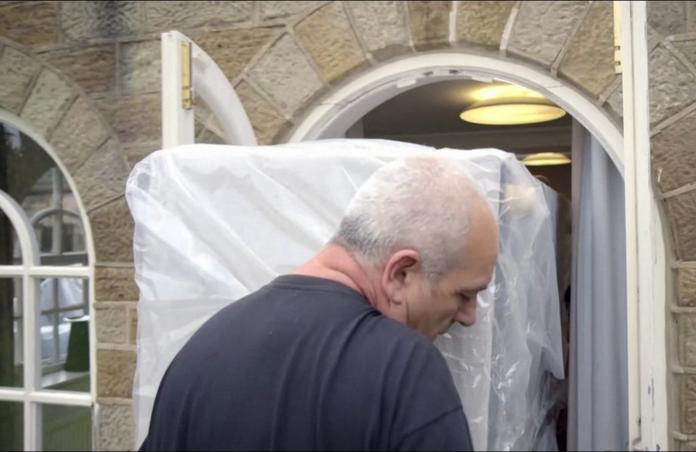
Great upholstery care starts as soon as your sofa arrives
Whether your furniture is supplied by one of DFS’ factories or supplier partners, you can rest assured that all our products undergo a robust code of practice. This ensures that you always receive the best quality possible.
However, there are certain furniture care considerations to bear in mind when your order arrives.
Delivery
In stock DFS products usually result in shorter delivery times. This is due to DFS working with multiple suppliers to ensure we have a variety of delivery times across various products, some are within just a couple of weeks.
We also have a variety of ranges that are made to order, which means you can customise these to the colour of your choice and choose your preferred interior. These ranges do tend to take a little longer - since they’re made just for you!
Products are packaged for protection in transit, which may cause slight creasing or flattening. Once unwrapped, they should return to their original shape.
Although our delivery teams are always super careful, now and then, some products may suffer damage in transit. If this happens, don’t panic - just get in touch with our friendly customer service team, who will happily work with you to put things right.
Unpacking and installation
Ensure you read all product care, operational and assembly information, and awareness advisories before using your product.
New product smells are perfectly normal and part of the manufacturing process. Just allow some time for your new piece of furniture to settle and the odour will naturally dissipate.
To keep your sofa looking it’s very best, avoid placing it in direct sunlight as this can cause discolouration and fading over time.
If you choose your new furniture based on a store model, bear in mind that the seat may feel firmer initially. This will soften over time, depending on how frequently you use it.
Unless stated otherwise in the product description or operational information, all DFS furniture is for indoor use only. But we’re sure you knew that!
The lighting, size, and established décor of a room may make the product colour appear different from website images or DFS store showrooms.
Use easy glides on non-carpet floor types with caution to avoid any personal injury.
Maintenance and cleaning
Covers, cushions, and interiors should not be hand or machine-washed, otherwise you risk damaging the fabric.
Depending on the material, everyday cleaning products could damage your new furniture. To play it safe, always read the fabric care advice on the product.
The DFS sofa care guide should be used as general advice. Any specific product care documentation should take precedence in furniture care.
Always ensure children and pets are supervised around motion furniture when in use.
Overloading plug sockets, over-connecting extension leads, and trapping wires may cause a fire risk or electrocution with your motion furniture.
How to check the health of your sofa
The first step of furniture care is actually understanding when your sofa or armchair is in need of repair. This knowledge is invaluable for checking whether your purchase suffered any damage in transit.
How to plump fixed seat and back cushions
- Pound down four to five times on the seat pads and back cushion. This helps reform the furniture interior’s form.
- If they become misshapen during use, use your hands to return any errant fillings to the corners of your sofa.
- To smooth out any creasing, run your hands from front to back of your furniture, applying a good amount of pressure.
How to plump removable seat and back cushions
- Every day, plump each seat and back cushion four to five times with both hands. You should also turn the cushions, if possible.
- Smooth out any creasing on a regular basis, returning interior material to the corners and air into the cushions.
- Plump arm bolsters four to five times, returning air into the area and reforming the interior.
Other DFS sofa care considerations
To ensure your new furniture maintains its fresh and firm feel for as long as possible, remember the following upholstery care considerations:
- Furniture interiors behave differently. Foam interiors provide immediate pushback to reform the seating area, whereas non-foams do not revert to the original shape as cleanly.
- Your hands are always the best option when plumping furniture. Using sharp objects or tools could damage the fabric.
- Leather and velvet sofas require a different type of fabric care, as it’s harder for the interiors to return to their original state following use. Customer upkeep is essential to maintain a product’s form and longevity. They need a little extra looking after to stay looking their best - but we think it’s totally worth it!
- Avoid any spillages or messy situations that may damage your new furniture.
- Large seating areas typically lose their plumpness faster than smaller pieces of furniture. This is a behavioural characteristic of the product design, not a fault, quality, or upholstery care issue.
How to care for your fabric sofa
To maintain the quality and longevity of any type of fabric sofa, you need to clean the upholstery regularly and be vigilant to any spills or potential stains.
Read our 11 tips and considerations to ensure your fabric care is consistently effective.
How to care for your leather furniture
Leather furniture may have a reputation for being easy to clean and care for, but they still need proper maintenance to look their best for longer. In this handy guide, we’ve broken down the essential dos and don’ts of leather sofa care.
Continue reading for nine top tips on how to care for leather furniture.
Avoiding sun damage to your sofa
Over time, all upholstered furniture is susceptible to discolouration caused by the sun’s UV rays - which can cause your sofa covers to fade or change in tone over the years. However, there are ways to minimise the effects of sun damage on your sofa, which can slow the fading process or make it less noticeable - helping to keep your new sofa looking its best for longer. Check out some of our top tips below!
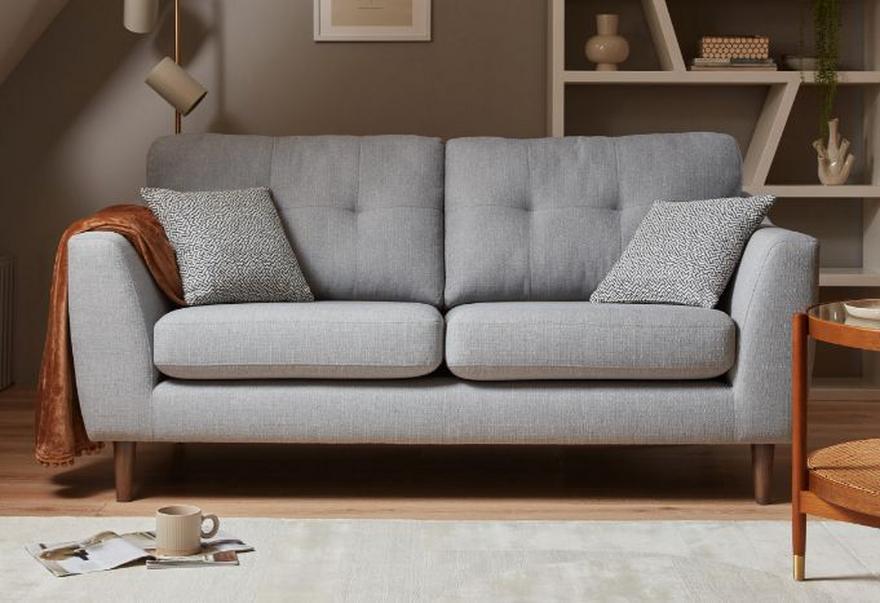
Place your furniture out of direct sunlight
It might sound obvious, but the best way to limit sun damage to any upholstered furniture is to position it out of direct sunlight. A sofa positioned in a bright spot - like under a large skylight or in a conservatory - will fade faster over time, due to the effects of discolouration, than one positioned in a more shaded part of the house.
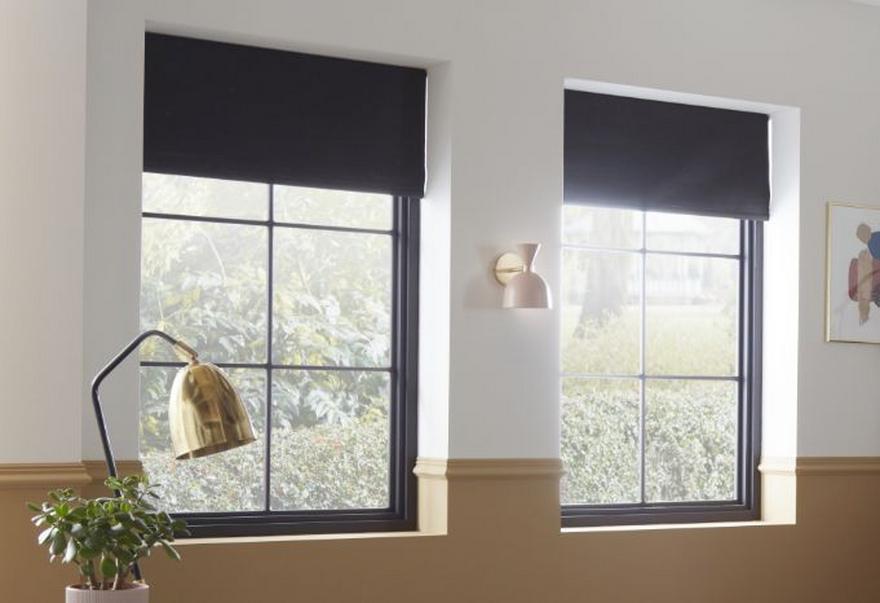
Install curtains or blinds
Solar blinds are a specialist option that can help to block UV rays entering your living space - but regular curtains can help to protect your sofa too. Whether you opt for sheer curtains or venetian blinds, there are plenty of window covering options that can help to soften the light coming into your room. Even blocking some of the UV rays will help to slow down the effects of discolouration on your sofa.
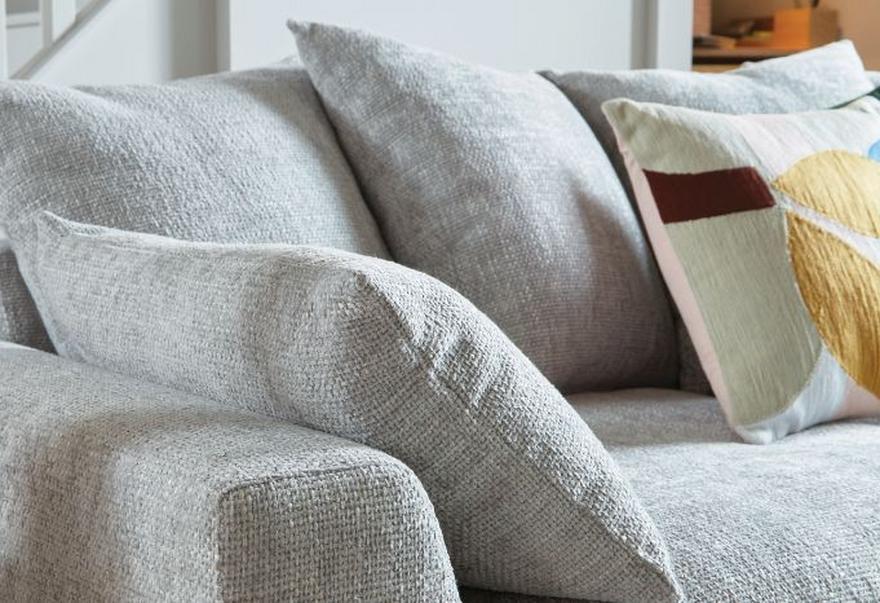
Rotate the cushions
If your sofa has reversible seat cushions, be sure to rotate them often. While this won’t protect against UV discolouration, it will ensure your cushions fade at a similar rate to the rest of your sofa, making any changes less noticeable across the whole sofa.
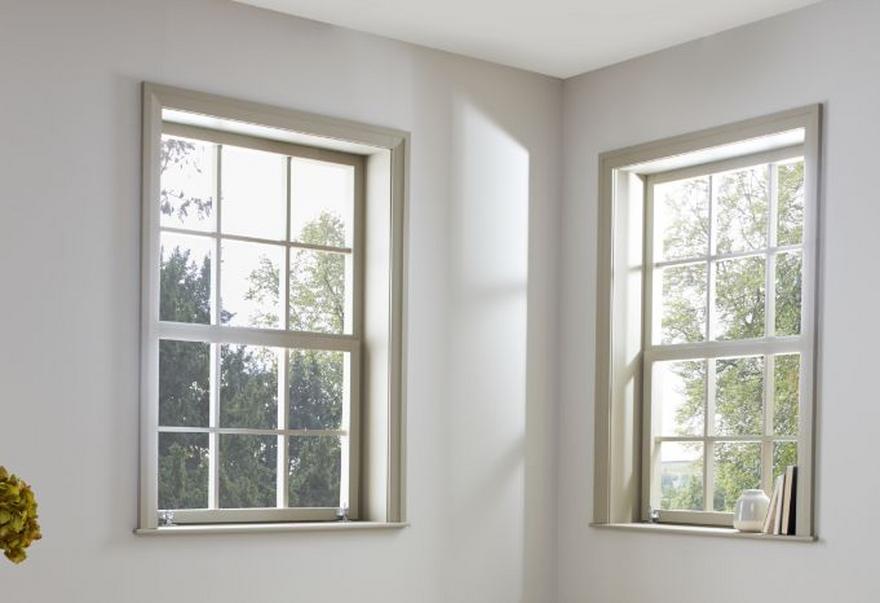
Upgrade your windows
Installing UV reflective adhesive film to your windows is a cost-effective and easy way to block up to 99% of UV rays, without compromising on light levels in your living space. If you are planning on replacing any windows, modern window manufacturers also offer specialist window glass that helps to reflect UV rays without reducing the light flooding into your space. Not only will these options help to prevent discolouration of your sofa, but it will have the same effect on other furniture and soft furnishings too.
Aniline leather
Exuding beauty like no other type of leather, full aniline leather is the most natural look of leather types. Very little treatment, such as colour or protection pigments, is used in the process and showcasing its all-natural markings and colour differences.
However, these types of leather may need a little more attention to maintain. When you’re looking to care for your aniline leather, you should only use dry cloths and soft brush vacuum attachments.
Semi-aniline leather
Unlike full aniline leather, semi-aniline leather is treated with additional protective finishes during manufacturing. This helps to prolong the colour and lifespan. Otherwise, you’d be hard-pressed to tell the difference. The grain of the material remains unchanged, which also highlights the all-natural features and patterns in the leather.
While semi-aniline leather has added protection, you should still conduct regular leather care. Just like aniline, avoid using any ‘off the shelf’ bleaches or cleaners, opting only for gentler cleans with dry cloths and soft brush vacuum attachments.
Corrected leather
Corrected leather has the most persistent look from sofa to sofa. That’s because the material has been lightly buffed and embossed for better uniformity of grain, while pigmentation treatment ensures colour consistency.
With these protective treatments, corrected leathers are much more durable and resistant to stains. As such, this type of leather is perfect for families and frequently used furniture in the home - although we still advise cleaning your sofa regularly with DFS-approved cleaning products to maximise its long lifespan.
Natural markings and characteristics of leather
While we may associate leather with a sophisticated smooth look, natural markings on the material are inevitable and part of its inherent charm. That means the likes of grain variation, wrinkles, skin folds, scars, or patterns of original hair follicles are 100% natural, rather than a product of poor leather or quality.
Below are some examples of the natural markings and characteristics of leather.
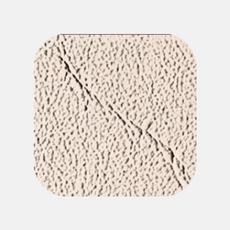





General product safety and user warnings
Regardless of whether it is a brand new addition to your home or an already established part of your décor, furniture should always be treated with care and caution.
To maintain proper furniture care and keep users safe, please consider the following:
- Due to the variations and different types of models available, all children should be accompanied at all times around the furniture.
- Avoid moving any furniture alone as this may cause injury if not performed correctly. Always ask a friend or family member to help with any significant moves.
- Do not stand or jump from a height on the seat platforms, arm bolsters, or back rails.
- Do not drag or pull your furniture across the floor or carpets as you can damage both the furniture and the flooring in the process.
- When you are moving furniture, ensure that there are no children or pets in the room who may run underfoot.
- Check for any power connection or connecting brackets and universal tabs before lifting the furniture.
- For module units that push together, such as corner sofas, ensure all units are fully connected correctly.
- Accidents could happen based on different floor surfaces. Take care with furniture with glides on potentially slippy floor types such as wood, tile, and laminate.
If you would like to always have this DFS sofa care guide close at hand, download the original PDF to your device by clicking the link below. Alternatively, you can get in touch with our friendly customer service team with any more questions you may have regarding leather sofas or upholstery care.
